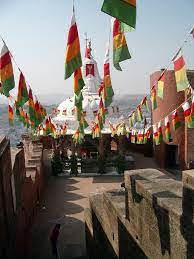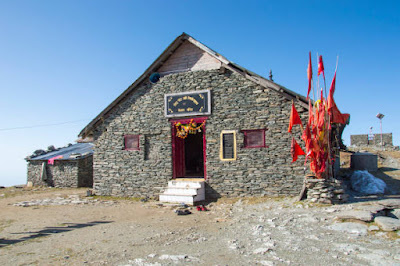Chamunda Devi is the presiding deity of the Chamunda Devi temple on the banks of the Bana Ganga in Himachal Pradesh, and one of nine goddesses whose shrines may be found across the Shiwalik Hills.
Despite the fact that each of these goddesses has her own identity, they are all regarded as different manifestations of the same Goddess.
Chamunda's founding story is based on events described in the Devimahatmya, a Sanskrit book that depicts the Goddess in many incarnations and is the cult's oldest and most significant mythological source.
The goddess Ambika's rage manifests as the fearsome goddess Kali, who marches into battle against the demon generals Chanda and Munda, whom she ultimately beheads, according to the Devimahatmya's eighth book.
The goddess is revered as Chamunda at the Bana Ganga temple because it symbolizes the spot where both Chanda and Munda were destroyed.
Chamunda is the name of a ferocious and deadly deity who is often associated with the goddess Kali.
The heroine, Malati, is abducted by followers (bhakta) of the goddess Chamunda and given as a human sacrifice to her in Bhavabhuti's eighth-century play Malatimadhava.
The drama's developments mirror the ambiguity with which such strong goddesses—and their devotees—have been seen in the past.
In the Devimahatmya, the Sanskrit book that is the oldest and most significant mythological source for the Goddess's worship, Chanda is a demon general slain by the Goddess.
The Goddess is depicted in this literature in a variety of forms.
The goddess Ambika's rage manifests into the terrible goddess Kali in the seventh book.
Kali assaults Chanda and his partner Munda's demon forces, and after defeating the army, she beheads the two generals.
Chamunda, as the killer of Chanda and Munda, is one of the titles by which the Goddess is revered as a monument to this legendary act.
See David R. Kinsley's Hindu Goddesses (1986) and Kathleen Erndl's Victory to the Mother (1993) for further details.
You may also want to read more about Hinduism here.
Be sure to check out my writings on religion here.


















